About this course
Editors publish documents in a variety of formats, ranging from books to websites to datasets. Some editions focus on providing the reader with as close to the experience of using the original document as possible, while others try to create a version of it that is broadly accessible. What kind of edition makes the most sense for your project? In order to choose the best option for your project, you’ll explore different types of editions as well as the advantages and disadvantages of each. You’ll then be introduced to a few digital platforms commonly used for editing, including those based on databases and using encoding.
What you'll learn
- Explain how different project goals might shape an edition.
- Recognize the key features of different types of editions, evaluate their benefits, and identify their drawbacks.
- Analyze the impact of using different publication platforms (i.e., print and digital), including identifying their benefits and limitations.
- Articulate your edition’s goals and likely publication platform.
Course Content
Guides
Contributors
Supervision
- Krista Tomaselli
Visualization
- Krista Tomaselli
Writing—Review & Editing
- Katie Blizzard
- Cathy Moran Hajo
- Russ Sprinkle
- Jennifer Stertzer
- Krista Tomaselli
Course Glossary
- Annotation
The use of descriptive, contextual, referential, or illustrative content or structure that supports the discoverability and accessibility of source materials. Annotation may take many forms (footnotes, source notes, metadata, glossaries, essays, indexes, keywords, images, maps, and more) and multiple forms of annotation may be used by a project.
- Combined Edition
An edition that includes both images and transcriptions. See in contrast to image-based editions and transcribed editions.
- Diplomatic Transcription
A literal transcription of a document, where all words, including those that were added or deleted, are represented. See in contrast to normalized transcription.
- Encoded Edition
An edition prepared using TEI-XML—a descriptive, standardized XML-based language developed and maintained by humanists. More information about the TEI and how to use it can be found at the scholarly, non-profit TEI Consortium: https://tei-c.org/.
- Encoding
The act of using a computing language, such as Markdown or XML, to represent or describe source material. See especially text encoding.
- Endnote
A note or essay that follows the presentation of a document or other source material. It is a form of annotation used for providing information about the source material and/or for creating connections to relevant resources.
- Footnote
A note attached to a specific element in an essay or source material (such as a word, sentence, section of an image or recording, etc.). It is a form of annotation used for providing information about that specific element and/or for creating connections to relevant resources.
- Headnote
A note or essay that precedes the presentation of source material or a collection of source materials. It is a form of annotation used for introducing or discussing the source material.
- HyperText Markup Language (HTML)
Created by Tim Berners-Lee in the late 1980s, HTML was the first official instantiation of a hypertext data model which became the de facto language for web writing and publishing in the World Wide Web.
- Image-Based Edition
An edition that presents images or facsimiles of the source materials. May also be referred to as a facsimile edition. See in contrast to transcribed editions and combined editions.
- Markdown
The act of formatting text for HTML using a plain-text editor.
- Metadata
Essentially, data about data. It can be used to describe the content, physical or structural features, and/or administrative elements of data. In providing such descriptions, metadata supports the management and discoverability of data. See the University of North Carolina Library's definition of metadata for more information: https://guides.lib.unc.edu/metadata/definition.
- Normalized Transcription
A transcription of a document where the substance of the content is retained, but some elements like spelling, punctuation, or contractions are changed with the intention of improving the readability of the text. See in contrast to diplomatic transcription.
- Text Analysis
The application of digital tools that mine and analyze text in the pursuit of finding new meanings or connections within the text.
- Text Encoding
The act of using the Text Encoding Initiative or TEI—a set of XML guidelines that have been developed to describe humanities texts—to edit source materials through encoding. More information about TEI and how to use it can be found at the TEI Consortium, a scholarly community that maintains the guidelines: https://tei-c.org/.
- Transcribed Edition
An edition that publishes transcriptions of documents. See in contrast to image-based editions and combined editions.


